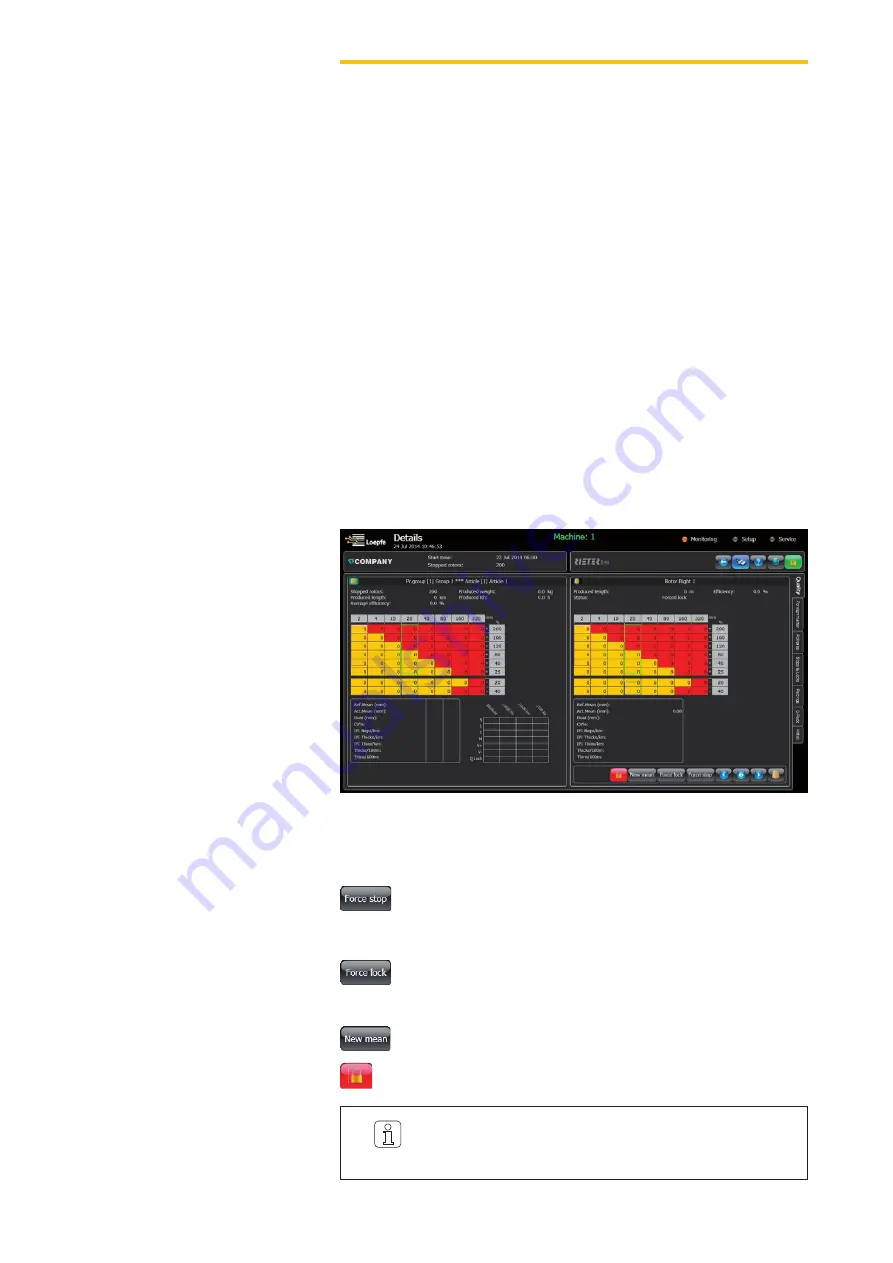
60
Troubleshooting
1N1 / 3N1
Any found fault or malfunction must be inspected and cor-
rected by a qualified person to guarantee the performance
of the clearer system.
8.2 Analysis of rotors with
unusual behavior
Rotors with unusual behavior, such as too many cuts, increased Q, F or P
data etc., are an indication that something at this rotor position is different
from the rest of the machine. This unusual behavior can have various causes,
such as differences in the applied sliver, the spinning components or malfunc-
tions of the clearer.
In addition to the built-in diagnostic functions the LZE-V also provides informa-
tion for verifiying such clearers and for analyzing the source.
The easiest way to determine a rotor position with an unusual behavior is to
use the Hitlist (
5.13.7 Hitlist
) since it displays most relevant production related
values and data of the three sensors.
The mean or Std.Dev related values can indicate wrongly adjusted values,
contaminations or malfunctions of the sensors or the spun material.
The surface related values can be an indication to wrong slivers or worn out
spinning components.
If such a rotor position is identified the Events (
7.5.2 Events
) of the specific
rotor can give an overview of the production behavior and history over the last
few hours. Very short running times after piecing and the reason for the stop
can be an indication of the source of the unusual behavior.
In case of doubts regarding the communication or the measured sensor val-
ues of a clearer, the following four buttons below the rotor data (
Monitoring >
Details
) can be used for different actions.
Force stop:
Checks the communication between LZE-V, SE-Board,
sensing head and machine SE. The piecer starts the rotor again
without operator intervention.
Force lock:
Basically the same effect as Force Stop, but also blocks
the spindle. Means the user has to unlock the rotor either with the
unlock button or by making a new mean.
New mean:
New adjustment to the yarn after the next piecing.
Unlock Rotor:
Unlock the rotor position.



































